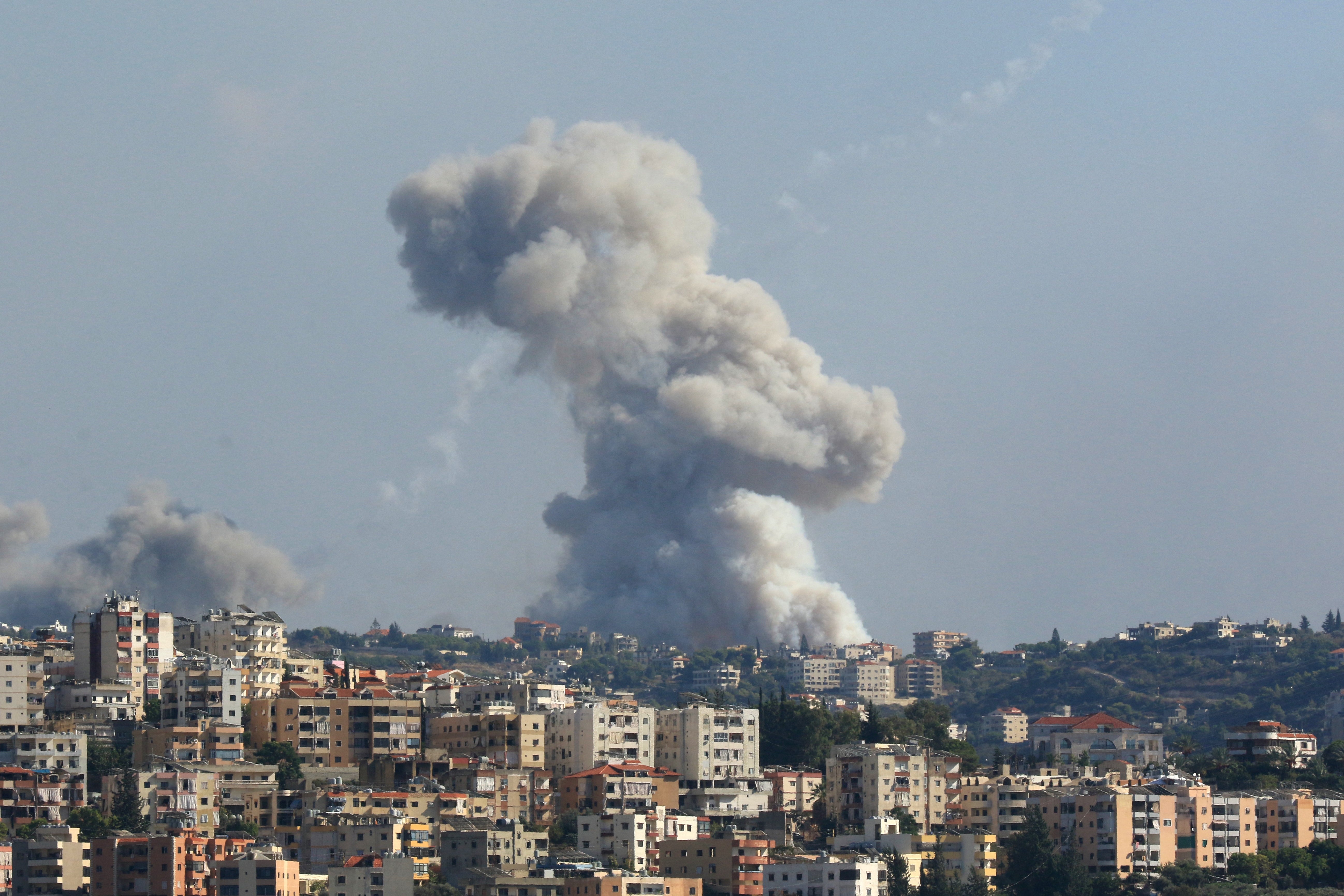Mapped: Where have Israel’s missiles hit Lebanon as nearly 500 die in one day
Israel claims Hezbollah hides rockets and weaponry in residential areas; Lebanon’s health ministry accuses Israel of hitting hospitals and homes

Your support helps us to tell the story
As your White House correspondent, I ask the tough questions and seek the answers that matter.
Your support enables me to be in the room, pressing for transparency and accountability. Without your contributions, we wouldn't have the resources to challenge those in power.
Your donation makes it possible for us to keep doing this important work, keeping you informed every step of the way to the November election

Andrew Feinberg
White House Correspondent
Israel and Hezbollah have exchanged the fire of thousands of rockets, forcing tens of thousands to flee their homes. With the Israeli strikes on Lebanon being particularly intense, leaving more than 550 people dead and 1,800 injured in less than two days.
The Israeli military said warplanes struck 1,600 targets on Monday, claiming that they were being used by the Iran-backed Hezbollah Many, the military said, were hidden in residential areas and they called on resiudents to evacuate. Israeli warplanes resumed aerial attacks in the early hours of Tuesday.
Hezbollah, meanwhile, fired hundreds of rockets at the northern territories of Israel, highlighted in white in the map below, along with the occupied Golan Heights, on Sunday, Monday and again into Tuesday morning. It also struck southern Beirut on Tuesday afternoon, reportedly aiming for a Hezbollah commander.
The Lebanese health ministry, which is a separate authority to Hezbollah, says the Israeli strikes hit hospitals, medical centres and ambulances. Nearly 500 people, including 35 children and 58 women, were killed on Monday. That total became at least 558 on Tuesday. More than 1,800 people have been wounded according to Lebanon’s Health Ministry.
Israel maintains that, just as they look to destroy Hamas in the Gaza Strip, their assaults in Hezbollah are intended to blunt the group’s persistent threat to Israeli civilians.
Israel says Hezbollah has launched some 9,000 rockets and drones into Israel since last October, and has increased its capacity to 150,000 rockets in total.
Below, we look at where the strikes have hit over the past few days.
The large majority of Israeli strikes in Lebanon were concentrated in the southern regions controlled by Hezbollah.
Footage showed smoke rising across the hilly landscape south of Sidon. The cities of Tyre and Hamoul, both on the Mediterranean Coast, were badly hit.
The towns of Bint Jubayl and Marjayoun, close to the border with northern Israel, were also struck.
But the capital of Beirut further northwest was also hit later on Monday, where some senior Hezbollah personnel are located.
Lebanon’s state-run National News Agency reported three missiles hit southern Beirut’s Beir al-Abed neighbourhood. Hezbollah’s Al-Manar TV said six people were wounded.
On the other side of the country, on the border with Syria in the northeast of Lebanon, strikes hit residential areas in the south and the eastern Bekaa Valley. Hermel was also struck.
Israel said it was expanding the airstrikes to include areas of the valley along Lebanon’s eastern border with Syria. Hezbollah has long had an established presence in the valley, where the group was founded in 1982 with the help of Iran’s Revolutionary Guards in the wake of Israel’s invasion and occupation of Lebanon.
Hezbollah targets in Israel
In Israel, the affected areas were largely confined to the northern territories, as well as several districts near the city of Haifa. But the destruction wrought by Hezbollah’s attack was largely blunted by Israel’s air defences.
Last week, the Israeli government added to its war aims the return of its displaced citizens from the north back to their homes.
Tens of thousands were forced to flee after the current conflict with Hebzollah was ignited on 8 October, a day after the group’s allies Hamas attacked inside Israel, killing around 1,200 people and taking 251 hostage into Gaza.
More than 41,000 Palestinians have been killed during Israel’s subsequent ground and aerial offensive intended to root out Hamas, according to health officials in the Gaza Strip.
Hezbollah says it will not stop firing rockets into Israel until they cease their assault on Gaza.
Subscribe to Independent Premium to bookmark this article
Want to bookmark your favourite articles and stories to read or reference later? Start your Independent Premium subscription today.
Join our commenting forum
Join thought-provoking conversations, follow other Independent readers and see their replies
Comments